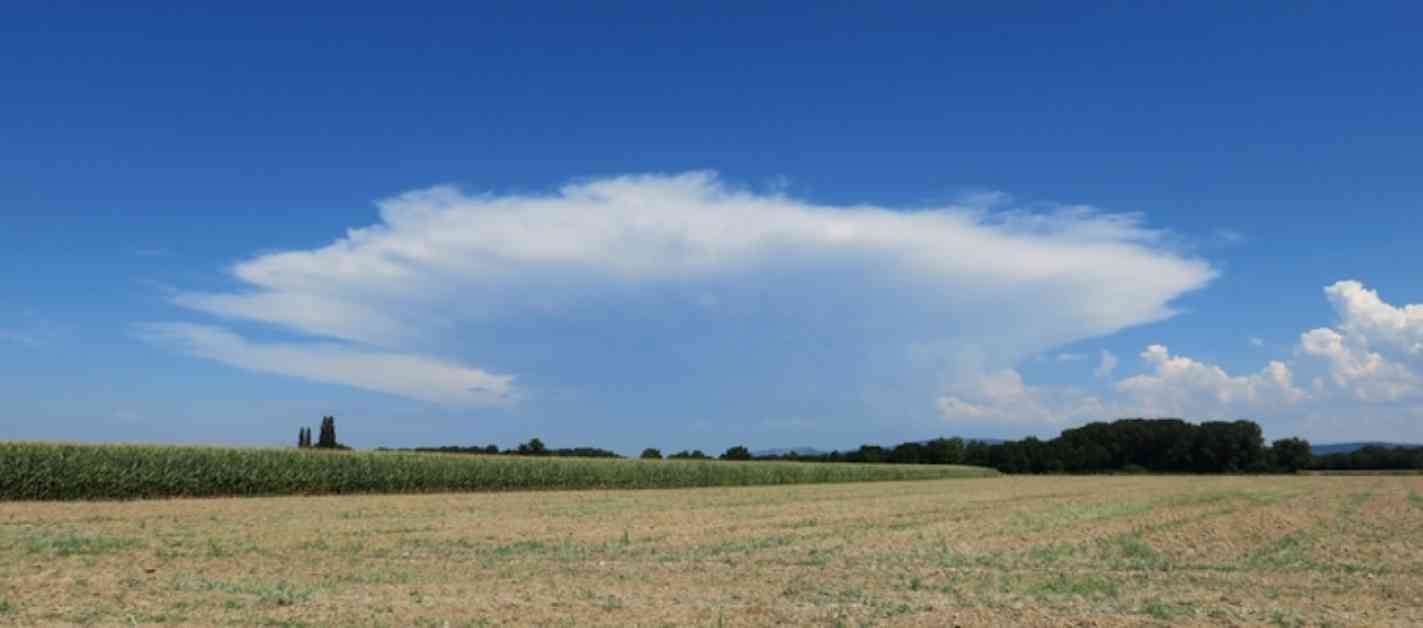Summer 2024 Weather Recap: Record Heat, Intense Storms, and Heatwaves – Météo-France
As summer 2024 came to a close on August 31st, Météo-France reported that it was yet another season of above-average temperatures in France. With two heatwaves and locally intense storm episodes, the summer of 2024 proved to be a challenging one for the country.
Record-Breaking Heat
The summer of 2024 was marked by soaring temperatures across France, with June meeting normal expectations, July slightly warmer (+0.6 °C), and August significantly hotter (+1.5 °C). Overall, the summer of 2024 displayed a warm anomaly of +0.7 °C compared to the 1991-2020 norm. This makes it the third consecutive summer above seasonal averages.
Throughout the season, France experienced two national heatwaves. The first, brief but intense, swept across the southern half of the country between July 29th and August 2nd. The second heatwave occurred from August 6th to 13th, affecting a large part of France except for the Northwest.
Before 1989, France would typically see a heatwave every five years. However, since 2000, heatwaves have become almost an annual occurrence in the country.
Scorching Nights and Tropical Conditions
The persistence of heat was particularly notable near the Mediterranean, with both daytime and nighttime temperatures remaining high. On August 5th, the sea surface temperature between Corsica and the mainland even exceeded 30 °C.
Temperatures soared above 40 °C in the Mediterranean regions, as well as in Gironde and the Landes. Nearly 70% of France experienced at least one « tropical » night during the summer, with nighttime temperatures exceeding 20 °C. This proportion is similar to the trends seen in the 21st century summers but significantly higher than those of the 20th century.
Varied Precipitation Patterns
While the beginning of the summer was characterized by stormy and rainy weather, August saw a significant decrease in precipitation levels across the country, with a deficit of 25% compared to normal. Despite several stormy episodes, especially in the Southwest and Northeast, the overall summer precipitation in 2024 was in line with the norm.
Regionally, there were significant disparities in rainfall distribution. Areas like Centre-Val de Loire, Bourgogne, Grand Est, eastern Corse, Ariège, Aveyron, Loire-Atlantique, and Mayenne experienced a rainfall surplus of 30 to 50%. Conversely, regions like northern Aquitaine, Normandy, the Mediterranean coast, and western Corsica faced precipitation deficits of 30 to 40%.
As of September 1st, soil moisture levels varied, with above-average moisture in the Northwest and Paris Basin down to Lorraine, and significantly drier conditions in Languedoc-Roussillon, Var, and the Corsican coast. Other areas had slightly drier or near-normal soil moisture levels.
Regional Insights and Olympic Weather
The regional variations in temperature were stark during the summer of 2024. While the western regions experienced temperatures in line with norms, the eastern half of the country saw hotter conditions. The southeastern quarter of France recorded significantly higher temperatures, with deviations of +1 to +1.5 °C from the norm. Notably, Corsica and Provence-Alpes-Côte d’Azur experienced temperatures exceeding seasonal averages by over 2°C.
During the 2024 Summer Olympics in Paris, inclement weather made an appearance during the opening ceremony, with continuous rain on July 26th. The first week of the games witnessed sweltering conditions, with temperatures reaching 36.2 °C on July 30th, accompanied by sporadic thunderstorms. The following week saw drier weather with temperatures closer to norms. The closing ceremony on August 11th was held under sunny skies, with a daytime high of 32.6 °C.
Extreme Weather Events
The summer of 2024 was fraught with severe thunderstorms across various regions of France, characterized by heavy rainfall and large hailstones. These stormy episodes punctuated the season:
– From June 17th to 24th: Torrential rains and hailstorms affected many regions in the western half of the country and a large part of the southeast, leading to flash floods in Isère and Vésubie Valley.
– June 28th to 30th: Intense thunderstorms from the Southwest to the Northeast, with heavy rains and large hailstones (up to 5 cm in Haute-Marne). June 29th saw the highest lightning activity of the summer, with 32,500 lightning strikes.
– July 11th and 12th, and July 20th and 21st: Heavy rains from the Southwest to the Northeast, with significant hailstorms in the Southwest and Massif Central. Mudslides were severe in Haute-Marne.
– July 30th to August 1st: Intense storm activity in the northeastern quarter, with strong winds, torrential rains (up to 50 to 80 mm in an hour), and large hailstones.
– August 13th to 15th: Stormy episodes in Occitanie and the eastern half of the country, with heavy hailfall and intense rains, such as in Toulouse on the 14th and Marseille on the 15th, receiving up to 50 mm of rain in an hour.
– August 24th: Severe thunderstorm activity from the Southwest to the Northeast, with large hailstones in Tarn and Meuse, accompanied by violent gusts of wind causing widespread damage.
– August 29th to 31st: Thunderstorm clusters from the west coast to Île-de-France and Bourgogne, with localized heavy rainfall of 50 to 80 mm in 24 hours in Morbihan and hailstorms in Bourgogne.
In Conclusion
The summer of 2024 in France was a season of extremes, with scorching temperatures, violent storms, and erratic precipitation patterns. The impacts of climate change were evident as heatwaves became more frequent, and severe weather events intensified. As the country navigates the challenges posed by these weather phenomena, adaptation and resilience will be crucial in mitigating their effects on communities and the environment.

